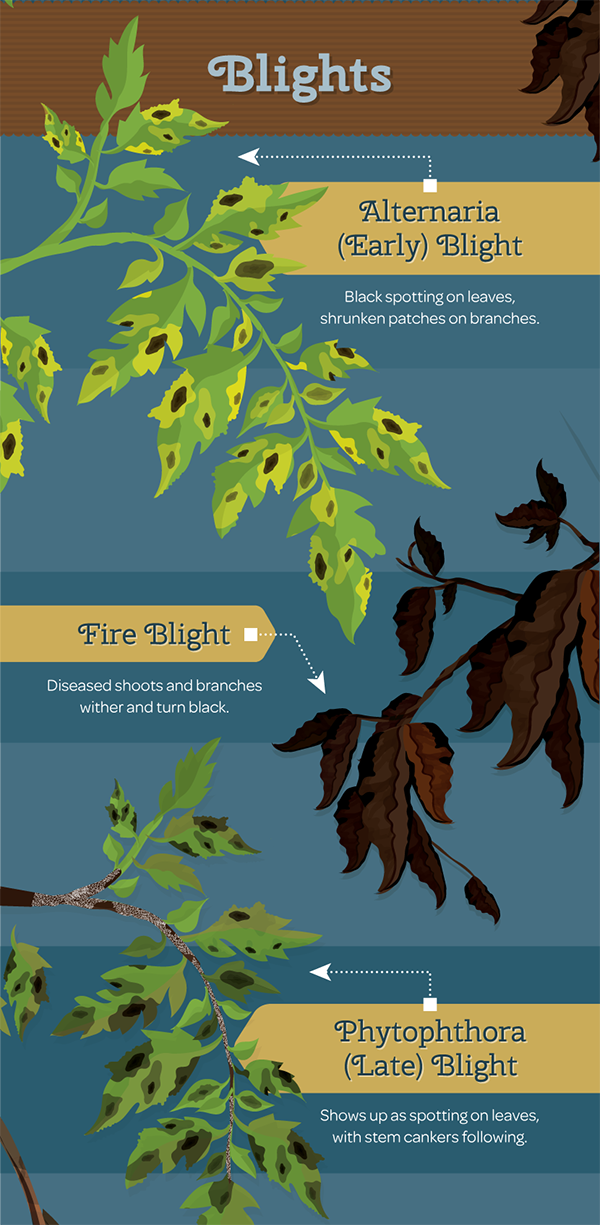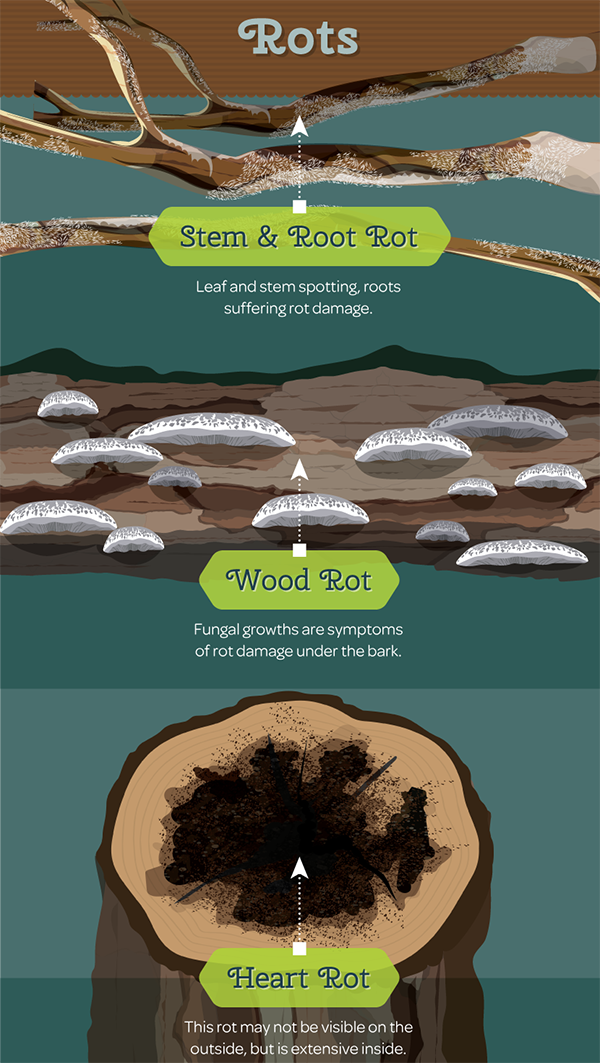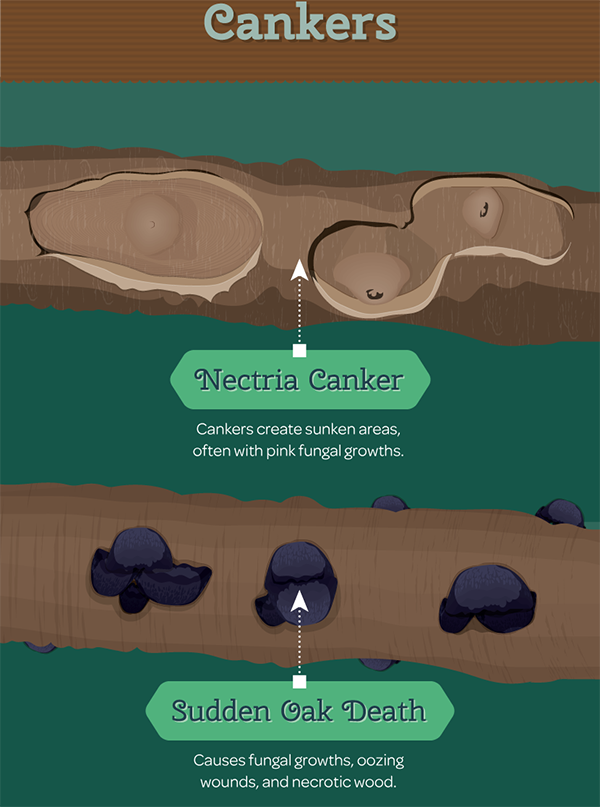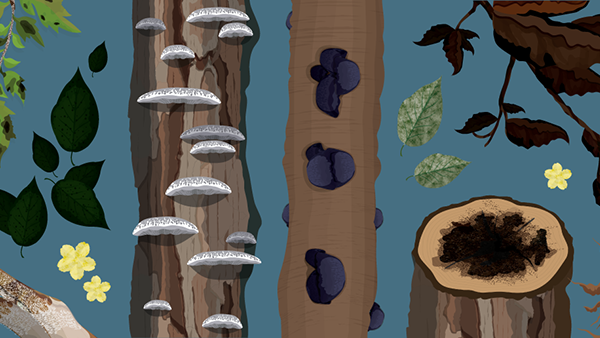By Kevin Espiritu
Contributing Writer
 Everyone wants to have a perfect garden. Nobody wants to find plants in anything less than perfect health. However, the sad truth is that plant diseases happen. If not treated, they’ll spread to the rest of your garden, and what was previously your paradise will quickly become anything but heaven!
Everyone wants to have a perfect garden. Nobody wants to find plants in anything less than perfect health. However, the sad truth is that plant diseases happen. If not treated, they’ll spread to the rest of your garden, and what was previously your paradise will quickly become anything but heaven!
The names of plant diseases often match the symptoms, but not always. Still, by identifying the symptoms, you can usually determine the category and use a general treatment for that type. This will at least stop the initial spread, allowing you time to pin it down further.
If your leaves or branches suddenly stop growing entirely, wither, or die, you likely have a form of blight.
Alternaria (Early) Blight
In vegetables, this is called early blight. In trees and ornamental plants, it’s referred to as Alternaria blight. Either way, it’s caused by Alternaria fungi, and begins with black spotting on the lower leaves of plants. These patches grow larger and spread, causing leaves to wither and die. Indented, shrunken spots can appear on branches or on fruit or roots. You can apply baking soda sprays to help prevent this disease, but once it has taken hold in a plant, remove entire infected segments and dispose of them.
Fire Blight
Fire blight is most serious to arborists, as it impacts apple and pear fruits the most. It can also strike other fruit trees, cane fruit like raspberries, and roses. Shoots or branches which contract fire blight will wither and turn black. To combat this, remove infected shoots or branches immediately before the disease can spread into the plant’s roots.
 Phytophthora (Late) Blight
Phytophthora (Late) Blight
Caused by bacteria (Phytophthora infestans), this blight is better known as potato blight and was the cause of the Irish potato famine. In potatoes, tomatoes, and peppers, it’s caused by too much moisture, and shows up as grey-green water-soaked spots on the lower leaves that can gradually spread, followed by cankers on stems. Left untreated, the plant will rot. Applications of compost tea may help prevent this disease. Prune off and destroy any impacted vegetation on ornamentals such as azalea, rhododendrons, holly, or lilacs and on lightly-affected vegetable plants. Remove heavily diseased vegetable plants entirely and destroy them to prevent spread.
Rots mostly affect the wood, stems, roots, flowers or fruits of plants rather than the leaves. These insidious diseases create decay and cause rapid plant death.
Stem & Root Rot
By the time this disease is easily noticed, it’s already doing severe damage. Initially, this may look like a leaf blight as it causes lower leaf spotting, but the stems of plants will also show signs of spotting. At the same time, the disease may be rotting away the roots, preventing the plant from taking in nutrients. Fight these diseases by ensuring you have well-draining soil, doing a soil drench of fungicide or beneficial bacteria, and removing infected plant material.
 Wood Rot
Wood Rot
Impacting trees primarily, wood rot is spread almost entirely through tree wounds. Impacted wood can be described as dry, crumbly, powdery, discolored, or stained. Further, fungal growths can form in trees which have wood rot, usually at the site of the infestation. These mushrooms are a sign of severe disease. Trim out infected branches to try to save the tree, but if the trunk is impacted, the tree may need to be removed.
Heart Rot
Striking at the heart of plants such as celery, root crops, or trees, heart rot causes the center core of the plant or the plant’s root to rot from the inside out. Unfortunately, once it sets in, heart rot is extremely hard to destroy with fungicides, so smaller plants such as celery or root crops may need to be discarded. It is slow-growing in trees, which may mean your tree can survive for quite a while yet. If you suspect heart rot in your tree, contact an arborist for advice on proper care techniques.
Cankers are generally only on trees, but may occur on some vines as well. These cause sunken indents in the branches or trunk of the tree, sometimes with some raised areas of abnormal tissue. Cankers may ooze fluid or develop discoloration.
Nectria Canker
 Nectria cankers can form on most hardwoods and some vines or shrubs. Sunken areas form on or near wound locations, and occasionally pinkish fungal growths appear. This can kill branches or twigs and may cause girdling in young trees. This type of canker rarely kills the tree. To treat, remove any cankered branches a few inches below the canker, sterilizing your pruning shears in rubbing alcohol between cuts to avoid further spread. If the trunk is cankered, contact an arborist for assistance.
Nectria cankers can form on most hardwoods and some vines or shrubs. Sunken areas form on or near wound locations, and occasionally pinkish fungal growths appear. This can kill branches or twigs and may cause girdling in young trees. This type of canker rarely kills the tree. To treat, remove any cankered branches a few inches below the canker, sterilizing your pruning shears in rubbing alcohol between cuts to avoid further spread. If the trunk is cankered, contact an arborist for assistance.
Sudden Oak Death
This diffuse canker is becoming widespread. Originally it only impacted trees in the oak family in the western United States, but has since started to spread to Douglas firs, California redwoods, and other species. In non-oaks, it’s mostly limited to branch cankers and leaf infestation and can be pruned from the host tree. In oaks, it can impact all parts of the tree and rapidly spread, causing death. Removal and destruction of diseased material is the only treatment currently, and most current studies of this disease are to prevent further spread, as isolated instances have appeared in 22 states.
There are thousands of plant diseases, but here are a few common ones:
Powdery Mildew
Whitish, powdery growth that coats the leaves of plants. Use fungicidal sprays like neem oil to combat, and prune yellowed leaves and stems, destroying them to prevent spread. Feed and mulch to improve plant resistance.
Rust
This disease causes brownish or yellowish nodes on the back of leaves. Prune off diseased foliage and destroy to avoid spread.
Sooty Mold
This black mold forms on the sticky plant juices extracted by sap-sucking insects, and is often on evergreen shrubs. Kill off the pests and wash the mold off the leaves thoroughly. Prune if necessary.
Club Root
This is caused by a slime mold and impacts mostly brassicas. Infected soil is usually the cause for spore spread. To prevent, rotate your crops and keep brassicas out of the infected soil for a couple years to allow the spores to die off.
While all of these diseases sound horrible, keeping a watchful eye on your garden means that you can act quickly to stop the damage. Using preventative treatment ensures that it’s unlikely for any of these to wreak havoc, and that you will have a stunning show of greenery to enjoy year-round. Your plants will thank you!
Kevin Espiritu is the man behind Epicgardening.com, a gardening site dedicated to demystifying the secrets of the green thumb. When he’s not knee-deep in his garden, he’s usually skateboarding, surfing, or reading a book.
 Pride News Canada's Leader In African Canadian & Caribbean News, Views & Lifestyle
Pride News Canada's Leader In African Canadian & Caribbean News, Views & Lifestyle





